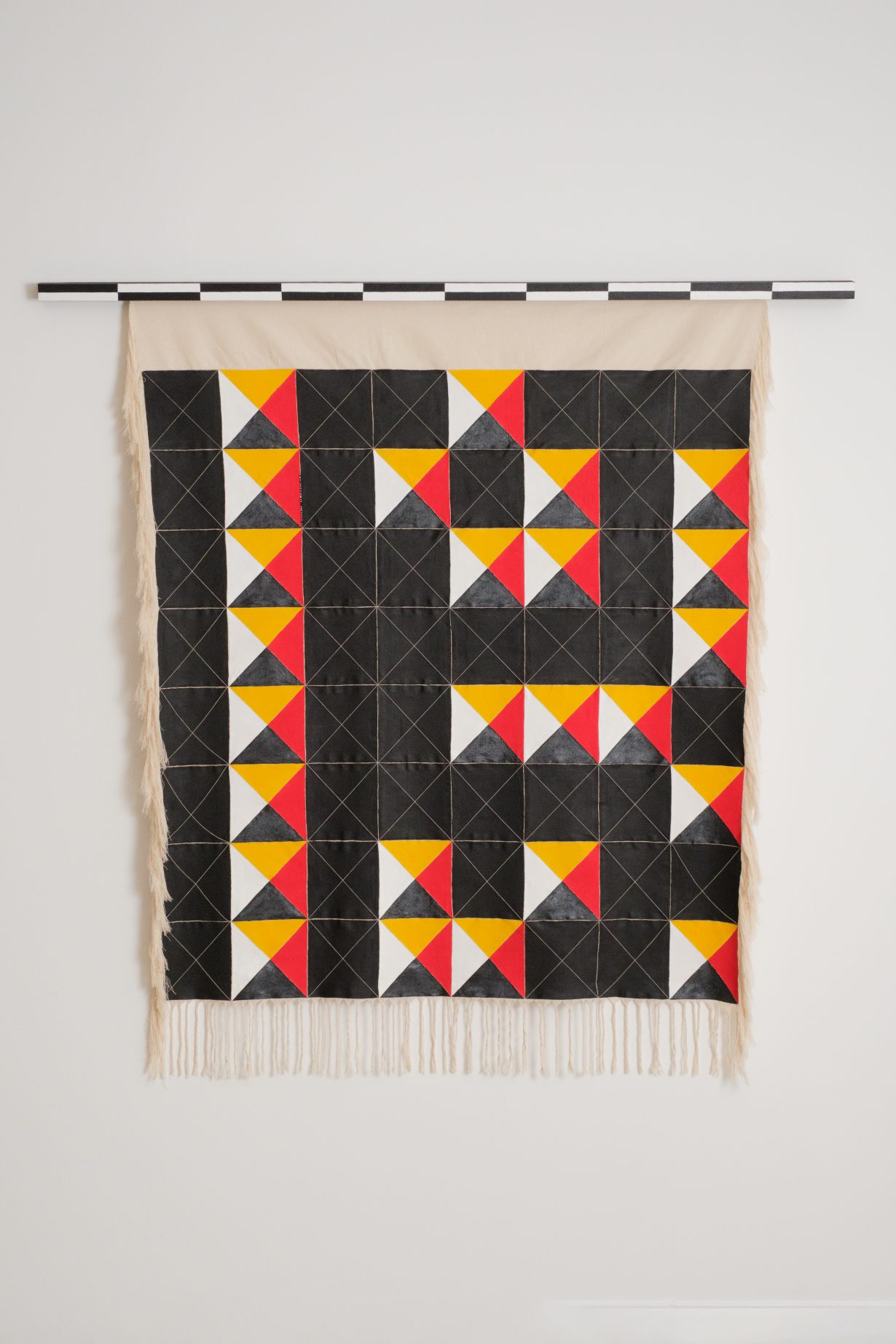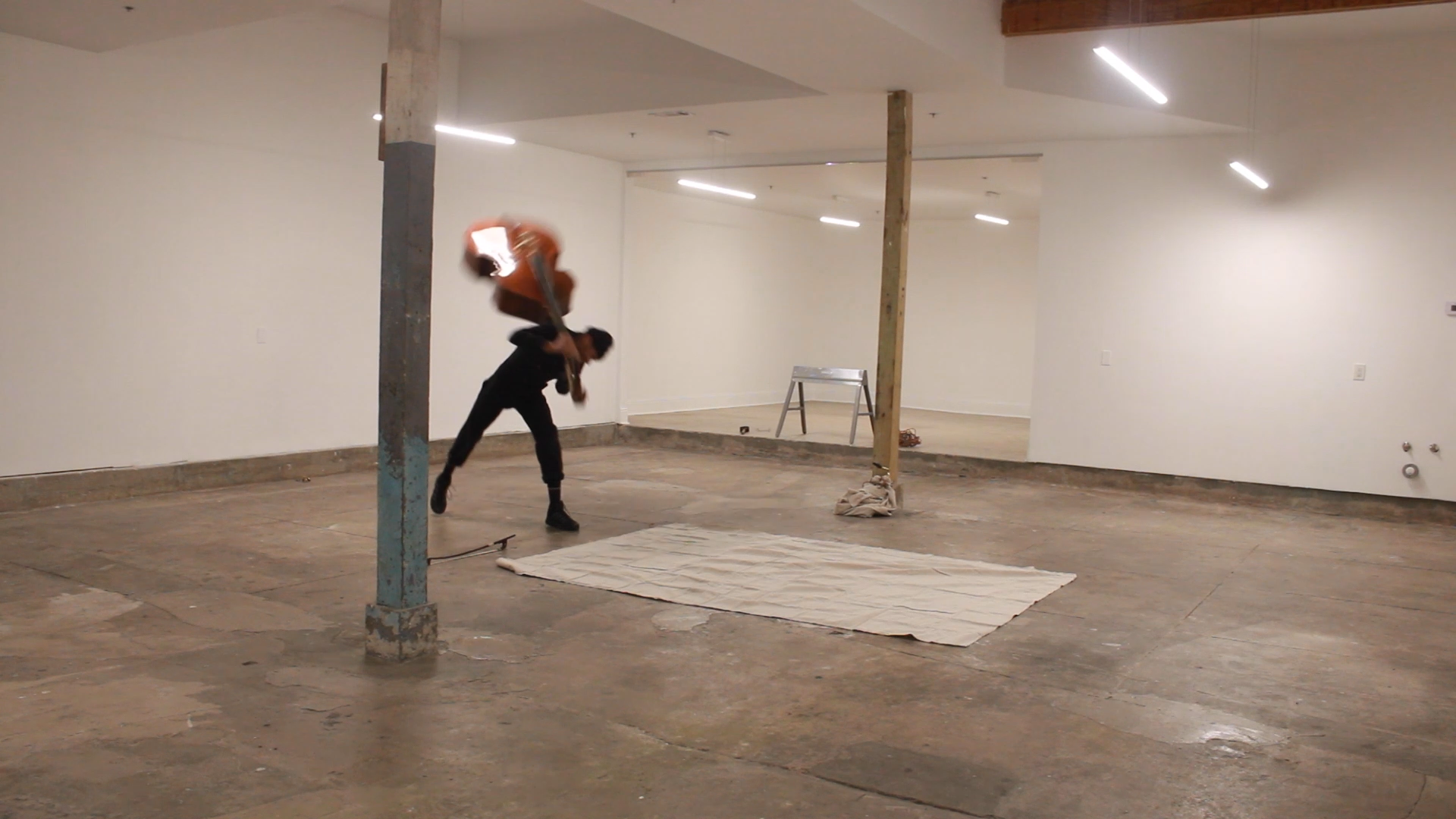Two new shows at Other Plans, New Orleans are guided by visions of radical futurity and decentring
On a chilly evening in January, the newest gallery on the New Orleans art scene inaugurated its programme with a performance intended to ‘break in’ the space itself. Alone in the gallery (but witnessed by a rapt audience looking in through its windows), sound artist Jeremy Toussaint-Baptiste played a few notes on his alto saxophone and upright bass, before subsequently smashing both instruments to pieces against the concrete floor. The resulting sculptural assemblages – in which fragments of bass, wood and string were gathered, just partially visible, into canvas gris-gris bags (a nod to the city’s Afro-syncretic cultures), or arranged in sparse compositions within inky pools of poured black silicone (for the artist’s S.L.A.B. series, 2024) – were a few days later on view at the official opening of Other Plans.
Titled Break Stuff, Toussaint-Baptiste’s exhibition considers the generative power of destruction and anger. Validating the collective rage many of us have felt in the face of mounting global conflicts and worsening social tensions, Break Stuff raises questions about the impotence of art in a time of crisis – or, conversely, the imperative that today’s art be more risk-taking and unfiltered than ever. The artist takes inspiration from metal and rock music (genres wherein performers have frequently wrecked their instruments on stage), the revolutionary rule-breaking of jazz, which originated here from the trauma of the transatlantic slave trade, and the many acts of artistic iconoclasm throughout avant-garde art history, demonstrating that we should transform our tools and traditions when they fail to build the world we envision. Partly inspired by Edouard Glissant’s notions of opacity and Créolité, as the artist explained to poet Kortney Morrow in an interview about this exhibition, these reconfigured sculptures pay homage to cultural forms that have emerged from rupture.
Shown concurrently are wall-mounted works on canvas and wood by New Orleans-based artist Ana Hernandez, whose exhibition Color of Clouds is likewise guided by a vision of radical futurity and decentring. Hung from slotted wooden bars, Hernandez’s paintings read more like tapestries or scrolls: unprimed and unstretched, their canvas edges have been laboriously hand-frayed into loose fringes and twists. Each composition features a grid of squares and pinwheels in seemingly randomised sequences of black, grey, yellow and red: patterns and hues that, for the precolonial peoples of Michoacán, Mexico (to which Hernandez traces her own ancestry), corresponded to cardinal directions and celestial bodies.

Hernandez has long been intrigued by organising systems like languages and maps, which reflect and reinforce sociocultural values. Indeed, within the grids of works like HUMANITY and POWER (we are (both 2023) are encoded patterns representing their titular words using the binary forms of American Standard Code for Information Interchange (ASCII). Utilising a colour palette based on Indigenous Michoacán cosmology, Hernandez hopes to symbolically subvert ‘binary’ thinking and biased conceptions about language; many precolonial societies, for instance, expressed history and cultural knowledge using visual systems, from Incan quipus to Yoruba adire cloth, the patterns of which seem to echo in the canvas twists and segmented geometries of Hernandez’s paintings.
Elsewhere, her series of mixed-media constructions titled We Are (O, C, H, N, Ca, P) (2023) emits a spacier vibe. Intrigued by the interstellar ‘Arecibo’ radio message transmitted into space in 1974, which contained coded data about Earth’s galactic position and the human genome, Hernandez hammered metal nails and tiny bits of mirrored glass into slabs of black-painted wood, spelling ASCII configurations for the atomic numbers of six elements found in the human body: oxygen, carbon, hydrogen and so on. As the viewer passes by, the works catch flickers of light, and shimmer like stars.
Ana Hernandez: Color of Clouds and Jeremy Toussaint-Baptiste: Break Stuff at Other Plans, New Orleans, through 10 March
